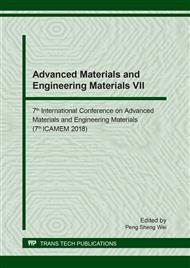p.377
p.381
p.386
p.393
p.397
p.402
p.411
p.416
p.421
Effects of Annealing Process on Mechanical Properties of Weather-Resistant Steel Welding Joints
Abstract:
In this paper, the mechanical properties of Q355NH resistant steel welded joints are studied. Through the analysis of mechanical properties of welded joints, the results showed that the tensile strength of the welded joints decreased after annealing and the elongation increased. The impact test results of tensile specimens before and after annealing showed that the impact energy of the weld area increased greatly after annealing, while the impact energy of the heat affected zone changed little. Furtherly, fatigue strength of specimens before and after annealing was compared, and the results showed that under the condition of high cycle fatigue, the un-annealed specimens were broken and the fracture position was located on the parent metal, whereas the annealed specimens did not break.
Info:
Periodical:
Pages:
397-401
Citation:
Online since:
August 2018
Authors:
Price:
Сopyright:
© 2018 Trans Tech Publications Ltd. All Rights Reserved
Share:
Citation:


